*Note from A Chronic Voice: Angela wrote “I May Be Chronically Ill, but I’m Also Chronically Resilient” on our blog last year, and she’s now back with a follow up piece! (That article was also featured on the Top 10 list from 2018, by the way.) In the previous article, she talked about a system which she had developed for herself called the ‘3Rs of Resilience’. For a brief recap, she stated that resilience exists in three forms:
- Staying Robust on challenging days
- Regenerating when faced with setbacks
- Radiating on good days
In this new article, she shares seven techniques from Positive Psychology Interventions. Whilst there are many strategies out there, these are her personal favourites, and ones she learned in her Positive Psychology class. She hopes that they will also help to build your resilience up further. Let’s get started, with Angela’s A to G strategies!
Table of Contents
A is for Developing Self-AWARENESS
All personal growth starts with self-awareness, and developing resilience is no different. My favourite quote about self-awareness is by Lao Tzu, the wise Chinese philosopher, who said:
“Knowing others is intelligence;
knowing yourself is true wisdom.
Mastering others is strength;
mastering yourself is true power.”
Self-awareness is about knowing our own needs, strengths and weaknesses. When we understand ourselves better, we can use strategies with more precision to deal with our good and bad days.
We develop self-awareness by being aware of our emotions, thoughts, habits, behaviours and reactions. We can ask ourselves then, why we feel, think and behave the way we do. The more we understand ourselves, the more we can use this knowledge to make improvements.
Professor Chris Argyris called this ‘double-loop learning’, which differs from single-loop learning. In single-loop learning, we modify the method to get the result we want. Whereas in double-loop learning, the object itself needs to change to achieve the desired result. Thus, we can change our mental models by being self-aware, and through that, develop better and more creative strategies for dealing with life’s adversities.
I have developed a sense of self-awareness through handling my own chronic endometriosis pain. I now understand my own pain threshold, and how far I can push myself. I am aware of and admit to my limitations, so that I can reach out for help when needed, without compromising my independence, nor becoming over-reliant or fearful of my conditions.
B is for Mindful BREATHING
Mindful breathing is a simple exercise; all we need to do is to focus on our own breath. Instead of allowing the challenges to overpower us with stressful thoughts, we take a moment to pace our breath instead. Observe these breaths, and lengthen each in and out breath gradually over time. Through this focus on breathing, we can let go of stressful thoughts, even if it’s for a brief moment. This allows us to re-centre and recharge our mental capacities, to deal with the challenges at hand.
I find mindful breathing a huge help when it comes to dealing with chronic pain. I visualise where the pain is within my body, and breathe into it. Then I imagine the pain leaving my body with every exhale, and with that pain is often reduced. This gives me the clarity of mind to seek out the right treatments, instead of becoming overwhelmed with distress and panic.
C is for Developing CREATIVITY
Edward De Bono’s quote on creativity says it all:
“Creativity involves provocation, exploration and risk taking. Creativity involves ‘thought experiments’. You cannot tell in advance how the experiment is going to turn out. But you want to be able to carry out the experiment.”
Sometimes all it takes is a little creativity to solve a problem in life. Creativity requires us to look at things from a different perspective, or to apply a new approach to the solution. It calls for flexibility and a measure of risk-taking, to try that new method out.
Challenging situations can be a good time for us to flex our creative muscles. We don’t have to use the same old methods, especially if they have never worked that well. We can try new approaches, in search of breakthroughs and growth.
The unpredictability of chronic pain often catches me off guard. It hits me hard, when I don’t have my medications with me. So all I can do is to apply creativity to try and manage the pain. From my own experiments, I have noticed that drinking hot beverages help, especially coffee. I later learned that the caffeine helps to reduce inflammation, thus the pain that comes along with it!
Creativity can also manifest as a perspective change about the situation I’m in, which frees me up from feelings of self-pity.
D is for Growth Despite DISCOMFORT
Bad days don’t last forever, and good days are the best times for pushing ourselves to grow a little more. It is important to learn how to live well with discomfort, especially for those with chronic illnesses, because discomfort is our shadow.
Hence I don’t let myself become complacent on the good days. I maintain my wellness through regular exercise, healthy eating, and continue to build up good habits. In fact, I set higher goals and push myself harder on the good days at times, so that I can grow in strength and tenacity.
But there are also those days where we simply can’t handle anything anymore. For those with chronic illnesses, such days are frequent. It is then necessary for us to rest and regenerate, sometimes at the expense of interrupting work and social commitments.
The amount of timeout we need to take to deal with out health problems can prove extra challenging, because it goes beyond the physical aspects. We are often burdened with emotional ‘addons’ such as guilt, shame and worries that we are letting others down.
As such, it is important that we apply the next three strategies to help us cope with the bad days, and to regenerate faster and better.
E is for Self-EMPATHY
Self-empathy is the process of bringing the focus back upon ourselves, and to attend to the feelings and needs that arise with kindness. It differs from self-pity, which has an element of blame to it.
Self-empathy allows us to feel our emotions without guilt. It is easy to feel anger and frustration when you’re chronically ill, what with all the interruptions in life. Instead of berating ourselves or judging our needs and feelings, we can practice empathy to understand them better. One way to do so is to keep a journal, where you can explore questions with an emphasis on empathy such as, “What am I feeling?”, and “What do I need?”.
F is for FORGIVENESS
The Cambridge dictionary defines ‘forgiveness’ as:
“To stop blaming or being angry with someone for something that person has done, or not punish them for something.”
Part of the empathy process is to also reach a point where we forgive ourselves, for not being well enough to keep up with some of the commitments in life.
G is for GRATITUDE
Finally, practising gratitude for things both big and small helps us to tide through the most difficult times in life.
- Gratitude helps us to realise that even during the worst of times, there are still things to be grateful for.
- Gratitude encourages us to maintain focus on those good things.
- Gratitude helps us to keep faith and hope.
It isn’t hard to practice gratitude; all we need to do is to list down a few things that we’re grateful for on a daily basis. I personally find that journaling about my chronic pain, then ending it with a gratitude checklist brings comfort and peace.
In Conclusion
Over the past decade, I have consistently used these strategies to deal with chronic pain and other adversities in life. They help me to help myself in so many ways. These strategies ensure that I don’t stagnate on the bad days, and radiate on the good ones. They help me to stay robust while facing challenges, and to regenerate faster when knocked down.
When I was first diagnosed with pre-cancerous endometriosis, I was filled with depression and fear. There was a lot of shame, and it was hard for me to explain to people about my condition. Now, I am able to face my condition with hope and optimism, and am able to talk about it with candour.
These techniques that I learned from Positive Psychology have worked so well for me that I am now pursuing my Masters in it. Armed with these strategies, I am now able to manage longer working hours, without crumbling to the mental and physical discomforts.
It does take time and continuous effort for these strategies to work, however. Sometimes when I think that I’ve got it nailed, I stumble yet again. But so long as I can get back on my feet and practice these resilience strategies again, I know that I will return to vitality once more. I hope that these strategies will be of help to you, as they have been for me.
*Note: This article is meant for educational purposes and is based on the author’s personal experiences. It is not to be substituted for medical advice. Please consult your own doctor before changing or adding any new treatment protocols.
Read More: 40 People Share Their Best Pain Management Tips (What to Do if an Unforeseen Flare Up Hits)
If you liked this article, sign up for our mailing list here so you don’t miss out on our latest posts! You will also receive an e-book full of uplifting messages, quotes and illustrations, as a token of appreciation!
-
For More Insight:
- Positive Psychology Interventions: Are they effective for increasing wellbeing? (University of Zurich): http://bit.ly/2tpCqC7
-
References:
- Argyris, C. (1993). Knowledge for Action: A Guides to Overcoming Barriers to Organizational Change. San Francisco: Jossey-Bass Publishers.
- Debono, E. (1970). Lateral Thinking: Creativity Step by Step. Harper & Row
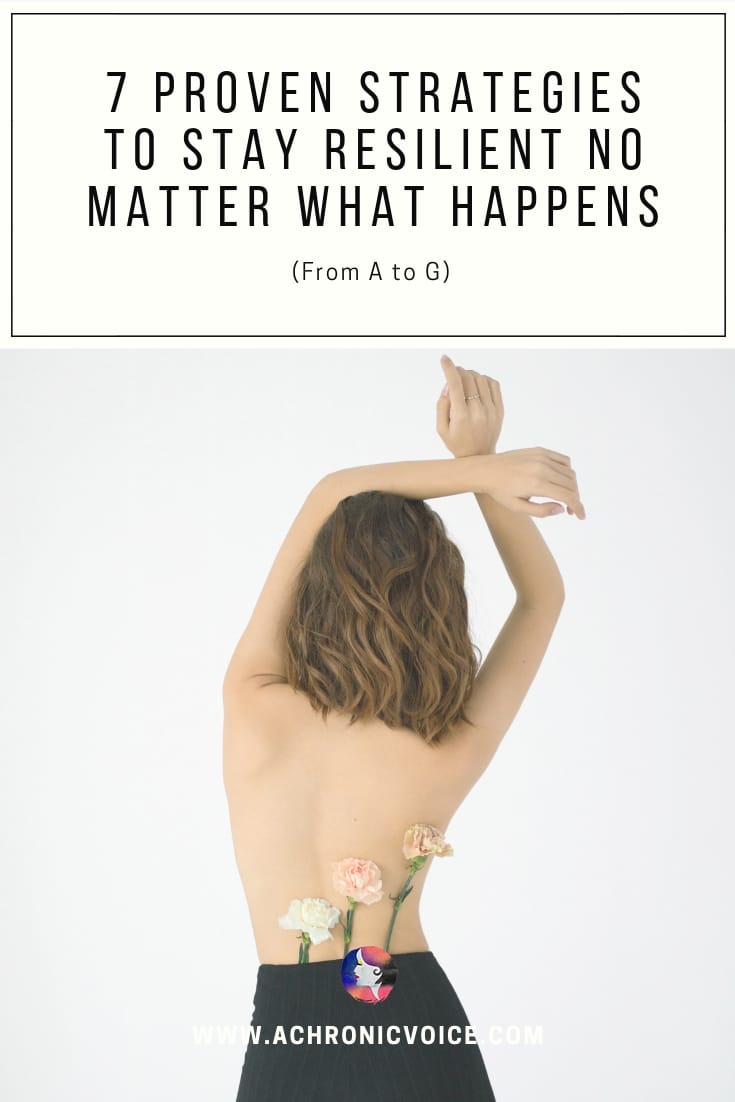
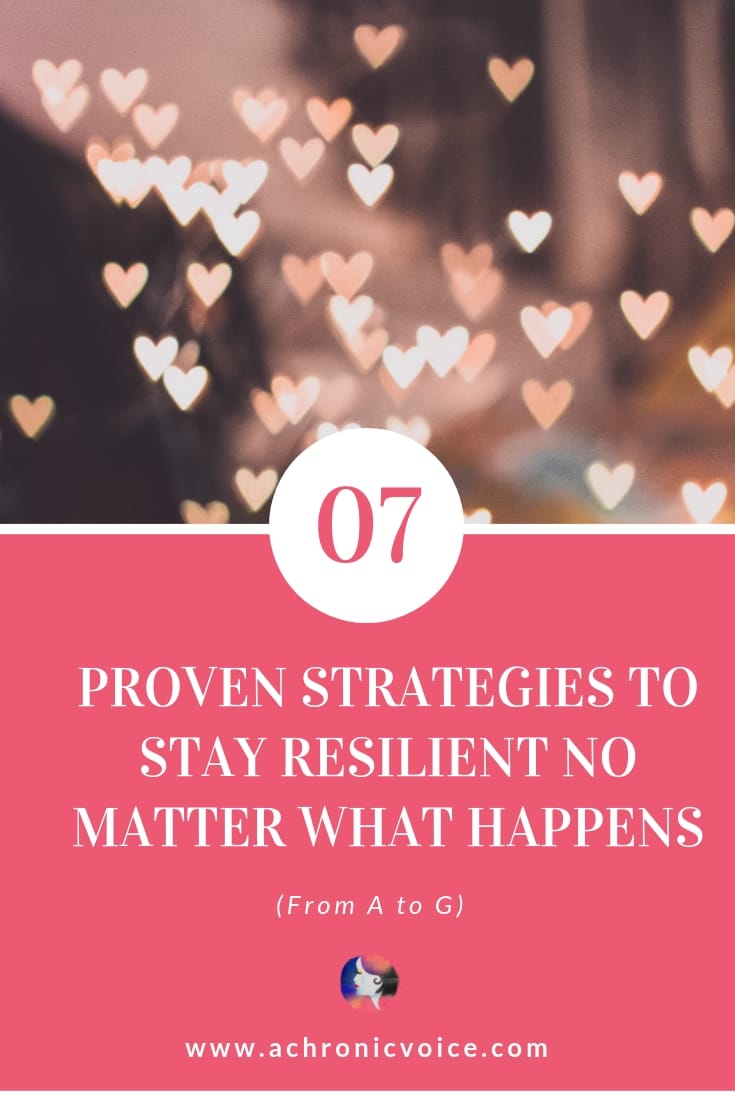
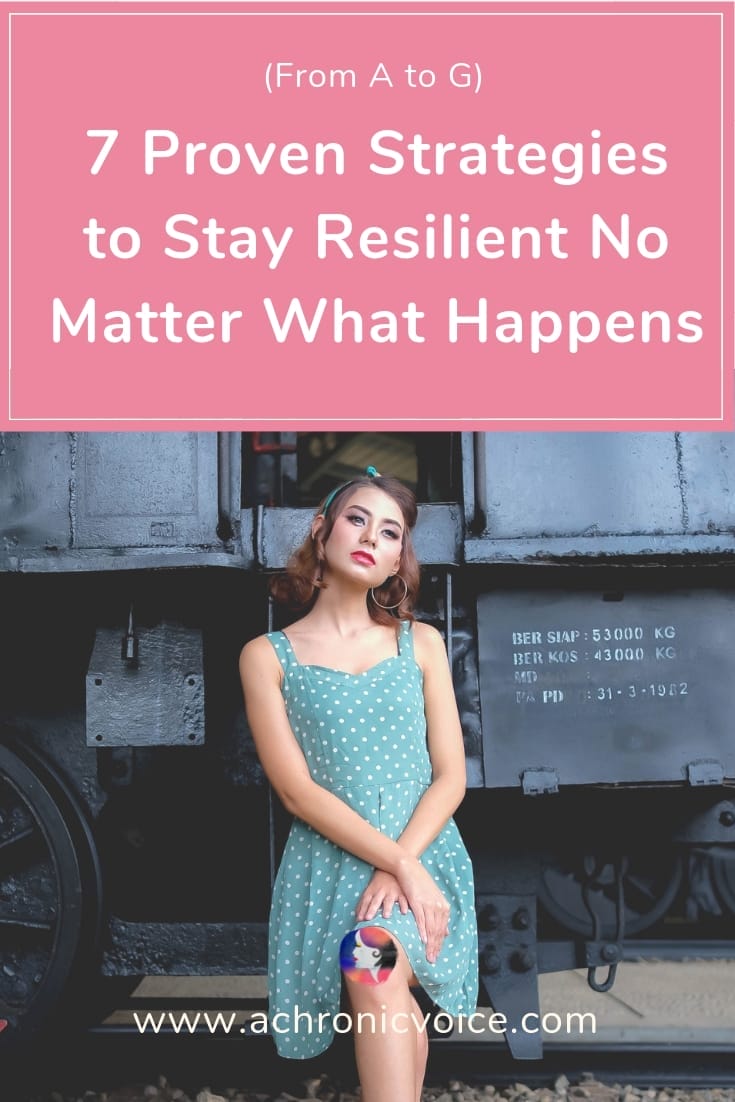
Contributor Bio
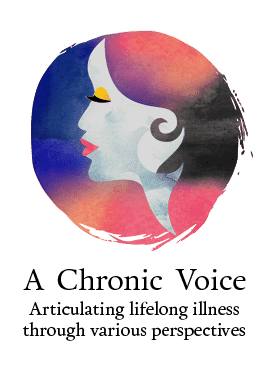
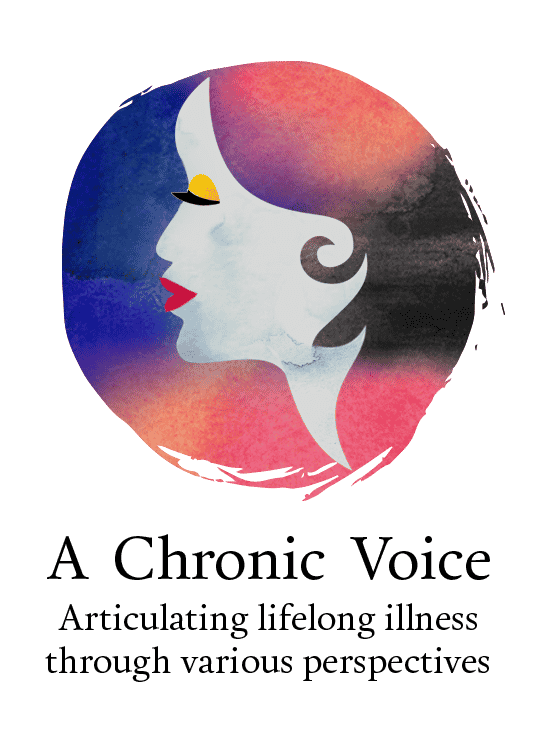
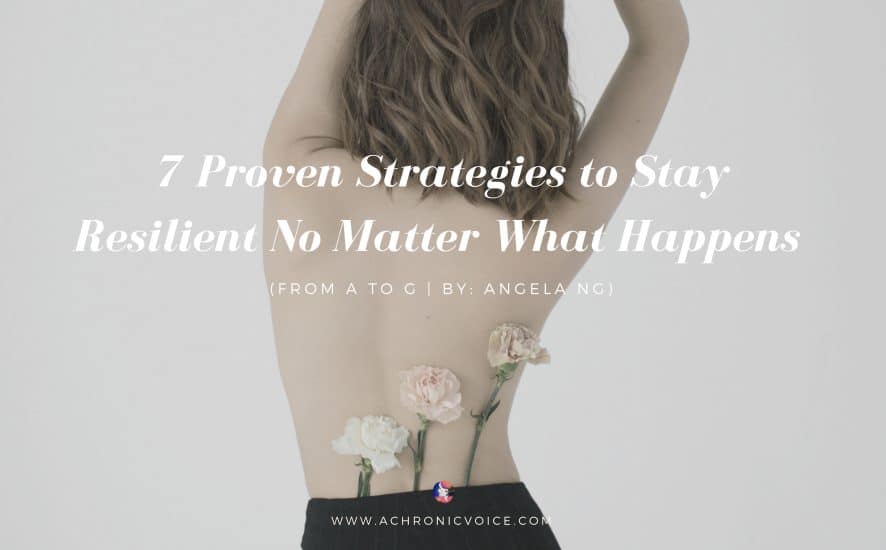

This is great advice! I especially need to work on the forgiveness aspect.
Hi Elizabeth, forgiveness definitely is a tough one, whether towards others or ourselves! Sending good thoughts 🙂
WOW! Such wise words. I loved this interesting approach. I’m defnitely saving this one!
I agree! Angela is really good with nailing resiliency strategies down 😀